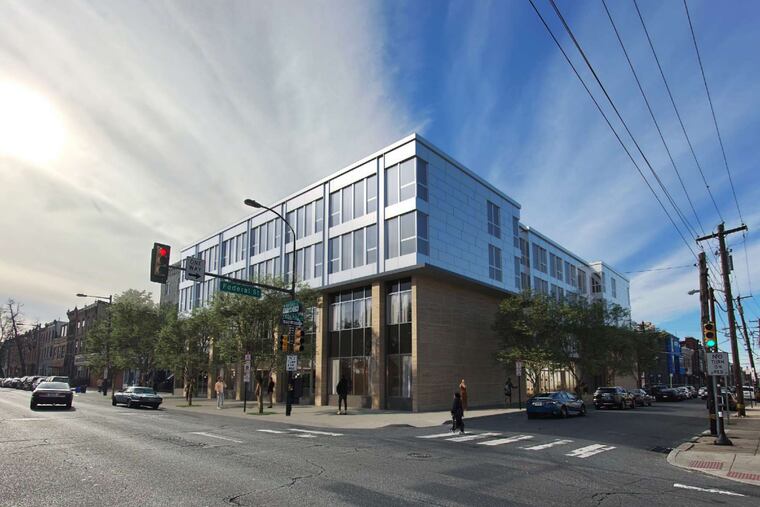53 apartments are planned above PEP Bowl in South Philadelphia
The plan to build apartments requires permission of the city's Historical Commission to move forward.

Fifty-three apartments are planned for 1200 S. Broad St., along with a two-story addition atop the historical building, the longtime home of Programs Employing People (PEP), which serves people with physical or developmental disabilities.
The nonprofit organization’s beloved bowling alley, PEP Bowl, is slated to reopen when the project is completed. But developer Spring Hill Services said that their ability to move forward with the project — and preserve the building for the nonprofits and its bowling alley — is contingent upon approvals from the Historical Commission.
“This building physically is absolutely in a state of terrible decline,” said Brett Feldman, an attorney for Spring Hill. “They really were so appreciative that our client was willing to come in, save the building, and keep PEP in the building. They see this sale as absolutely critical to their ability to survive.”
PEP did not respond to a request for comment.
The possible future of the 70-year-old building became clearer this week because Spring Hill is preparing for a review by the Historical Commission’s advisory Architectural Committee on Tuesday.
When the sale of the building to Spring Hill was announced last spring, the former Sons of Italy Grand Hall was not subject to historical preservation regulations. But in July, the not-for-profit advocacy group Preservation Alliance for Greater Philadelphia submitted a nomination to add the building to the city’s register of historic places. That would mean the building could not be demolished or visibly altered without approval from the city’s Historical Commission.
The commission’s staff are not recommending approval of the present proposal for a two-story overbuild, but the Preservation Alliance says it is not opposed to that plan.
“We recognize that there are extenuating circumstances with respect to the nonprofit and their ongoing survival and so we are not planning to take a dogmatic approach to our response to the proposed project,” said Paul Steinke, executive director of the Preservation Alliance.
In a letter to its clients last April, PEP said they were selling the building — which needed more repairs than they could afford on their own — because their programming had changed, and they needed less space. Best practices in the field now recommend that more services be provided in public or at clients’ homes as opposed to in institutional settings, so the organization could radically downsize its space.
Spring Hill’s expansion project would more than double the size of the existing 35,000-square-foot building. The design by Harman Deutsch Ohler Architecture would also enclose the courtyard that currently opens onto Federal Street, which leads to the PEP Bowl entrance.
The scope of the two-story overbuild, which would require the demolition of a small third story on the existing structure, is the reason the Historical Commission staff argue the proposal should be rejected.
“It is too large and occupies too much space on top of and interferes with the spatial relationships of the long, low, flat roof of the historic building, a distinctive characteristic of its architecture,” reads one of the rejection recommendations.
The advisory Architectural Committee will consider the case Tuesday, but the final decision will be made by the full Historical Commission.